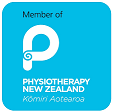
OVERVIEW
The anterior cruciate ligament (ACL) is a strong ligament which runs diagonally through the middle of your knee. It prevents the thigh bone (femur) from sliding out in front of the shin bone (tibia) and also gives rotational stability to the knee, especially when you twist or turn.
It is one of the most commonly injured ligaments, particularly among people playing sport and it’s usually damaged when you slow down very quickly, change direction rapidly or land incorrectly from a jump. Damage can also happen through direct contact or collision, such as a football tackle. It’s commonly injured during sports such as soccer, rugby, basketball, netball and skiing.
TREATMENT
ACL reconstruction is usually the treatment of choice for people who wish to return to a relatively high level of sporting activity, have an active job, or where the knee regularly ‘gives way’ and feels unstable. It may also be recommended if you are at risk of osteoarthritis in later life or if you have other damage to your knee.
The reconstruction can improve the stability and function of your knee and usually involves using a graft from a tendon in another part of your leg such as the hamstring or patella tendons. Not everyone with an ACL tear will need an operation to repair it.
Sometimes physiotherapy, exercises and a hinged knee brace to give your knee support will be all that’s required.
This is likely to be the case if your knee is stable or you have only a partial instead of complete tear of the ligament and you don’t need to play high-level sport or place significant strain on your knee.
REHABILITATION
Regardless of whether your treatment involves surgery or not, rehabilitation will play an essential role in getting you back to your normal daily life. A physio programme will focus on helping you regain knee strength and with that both movement and stability. If you do have surgery, the early stages of your physical therapy will focus on returning movement to the joint and surrounding muscles. This will be followed by a strengthening programme designed to protect the new ligament. The final phase of the rehabilitation should be focused on the functional demands of the sport or activity that you are returning to. It usually takes about 6 months to make a full recovery from ACL reconstruction; however, this is very dependent on the individual and how closely you follow the advice of your therapist.











